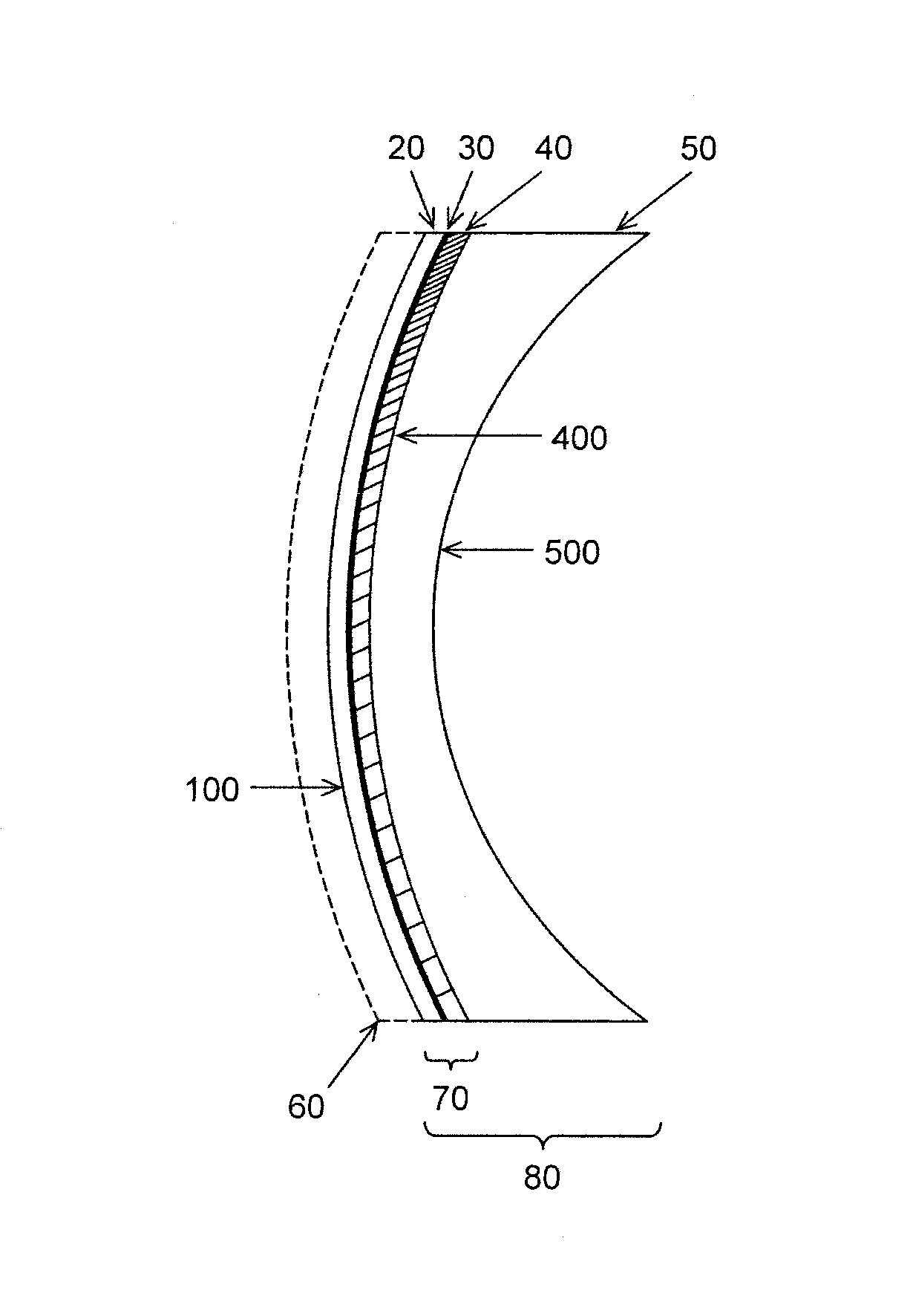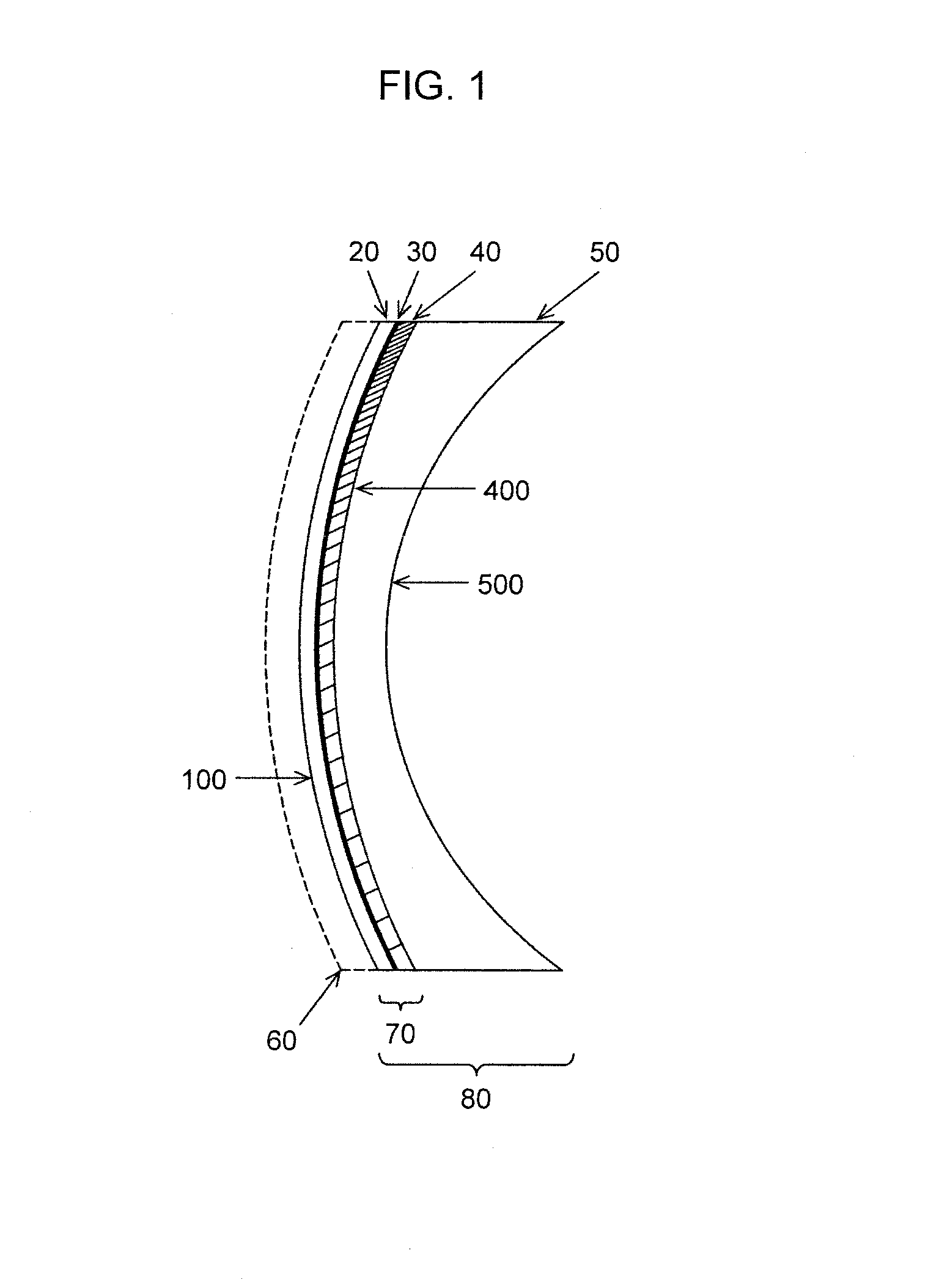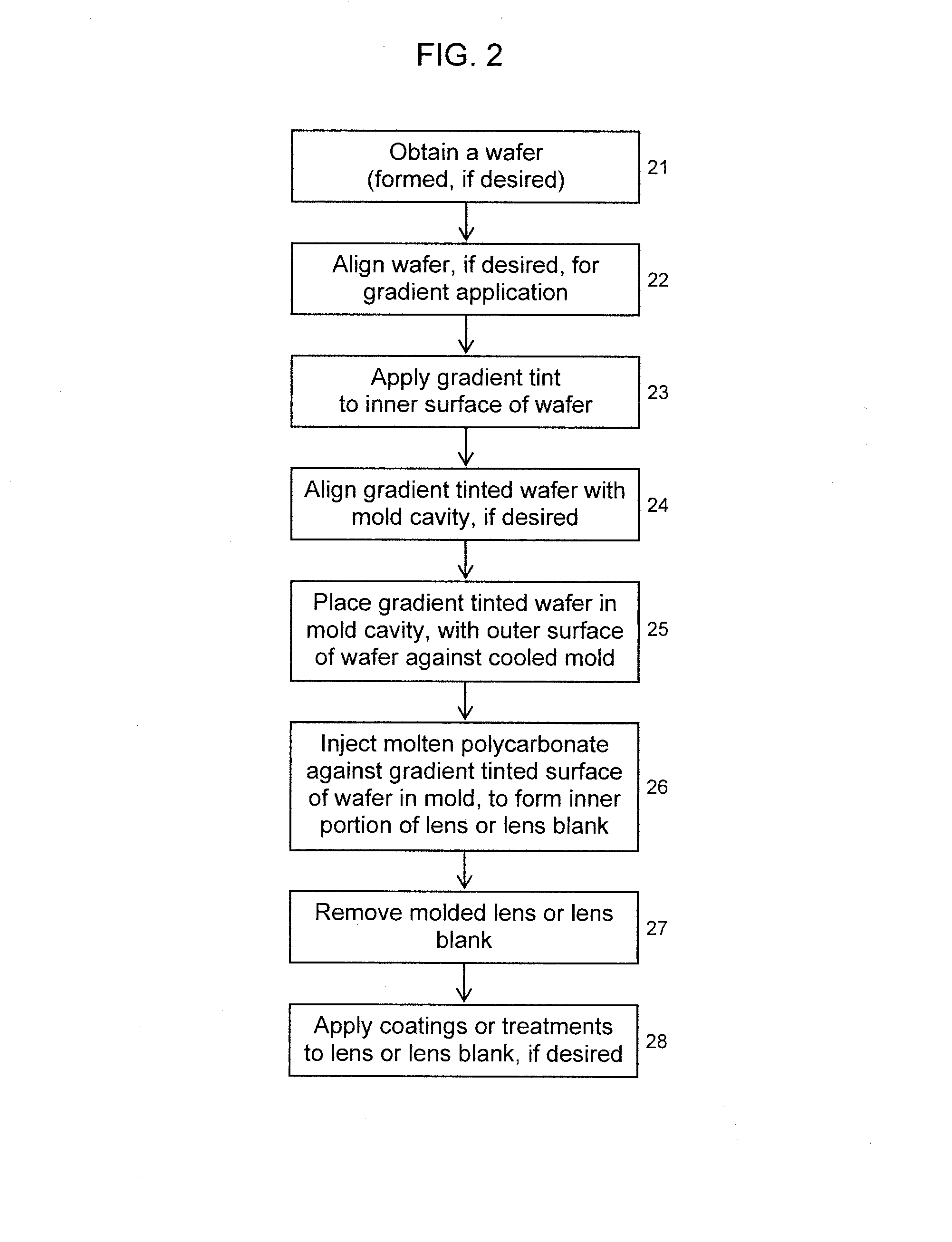Tinted polycarbonate ophthalmic lens product and method of manufacture
- Summary
- Abstract
- Description
- Claims
- Application Information
AI Technical Summary
Benefits of technology
Problems solved by technology
Method used
Image
Examples
example 1
[0089]Round, 76 mm diameter linearly polarized gray polycarbonate wafers (product code YNG, Wintec International Japan, Inc.) for use in eyewear lens products were obtained with a nominal 6B spherical radius of curvature (the typical range of radii for these wafers is 84.8 mm to 86.8 mm). The construction of the original wafer layers and their removable sheets was as follows, starting from the outer surface:
[0090]static-held protective sheet / / polycarbonate layer / polarizer
[0091]layer / polycarbonate layer / / static-held protective sheet.
The polycarbonate layers are adhesively joined to the polarizing layer in this wafer.
[0092]Both protective sheets on each wafer were removed. The wafers were mounted in the lens holder, immersed in the Lens Prep II solution for two minutes, and then dipped for gradient tinting using the four-cycle process described previously.
[0093]Visual inspection showed dye present on both sides of the wafers and a gradient tint pattern. The portion of each wafer that ...
example 2
[0095]A 6B wafer was prepared in the same manner as EXAMPLE 1, except the cleaning in the Lens Prep II solution was reduced to one minute in the 190-200° F. (87.8-93.3° C.) bath.
[0096]Visual inspection showed dye present on both sides of the wafer, and a gradient tint pattern. Significantly less crazing and micro-cracking of the surfaces was observed than for EXAMPLE 1.
example 3
[0097]6B wafers were prepared as in EXAMPLE 2 with gradient tints on both the inner and outer surfaces of the wafer. The wafers were dried in air at 80° C. for one hour prior to molding.
[0098]A gradient-tinted wafer was placed against the outer, actively cooled surface of a mold cavity in an Engel (Engel Austria GmbH) 300-ton vertical injection-molding machine. Sabic (Saudi Basic Industries Corporation) OQ3820-1111 optical grade polycarbonate was injected at normal molding conditions against the inner surface of the wafer to fill the mold cavity designed to produce an eyewear 6B single vision semi-finished lens blank.
[0099]The eyewear lens blank was removed from the mold cavity and inspected. The outer surface of the lens (which was also the outer surface of the wafer) showed excessive haze, crazing and micro-cracking. Upon moderate rubbing with a dry cloth, the tint could be partially wiped off the outer surface. Visual inspection of the lens blank showed that a gradient tint had b...
PUM
 Login to View More
Login to View More Abstract
Description
Claims
Application Information
 Login to View More
Login to View More - R&D
- Intellectual Property
- Life Sciences
- Materials
- Tech Scout
- Unparalleled Data Quality
- Higher Quality Content
- 60% Fewer Hallucinations
Browse by: Latest US Patents, China's latest patents, Technical Efficacy Thesaurus, Application Domain, Technology Topic, Popular Technical Reports.
© 2025 PatSnap. All rights reserved.Legal|Privacy policy|Modern Slavery Act Transparency Statement|Sitemap|About US| Contact US: help@patsnap.com



